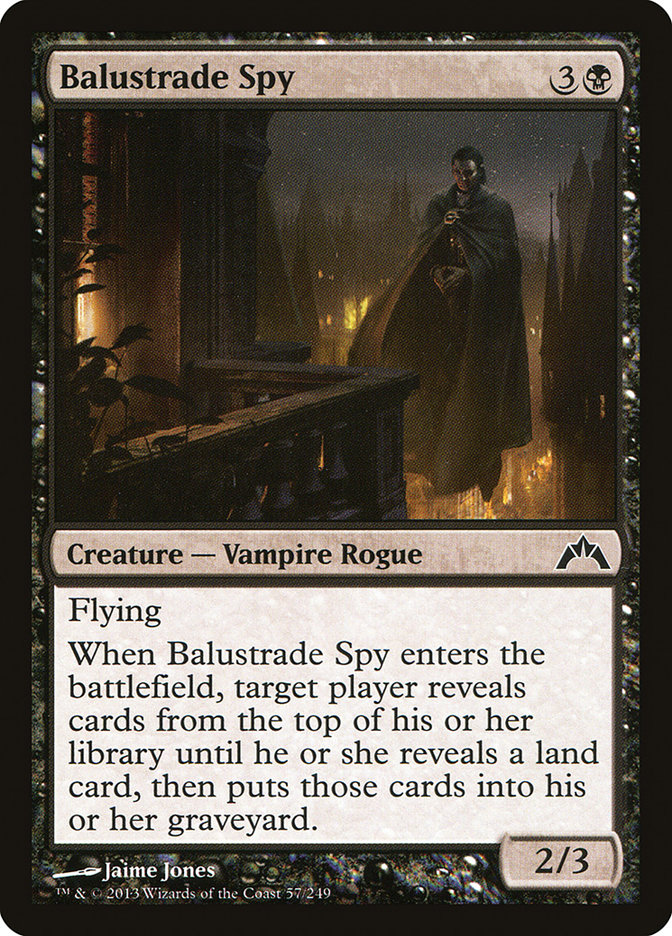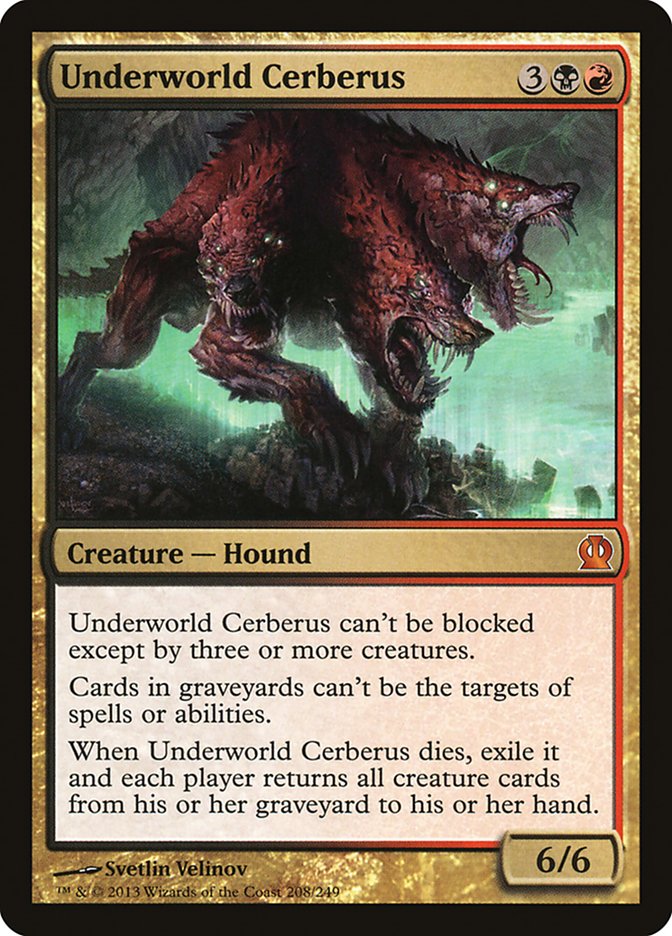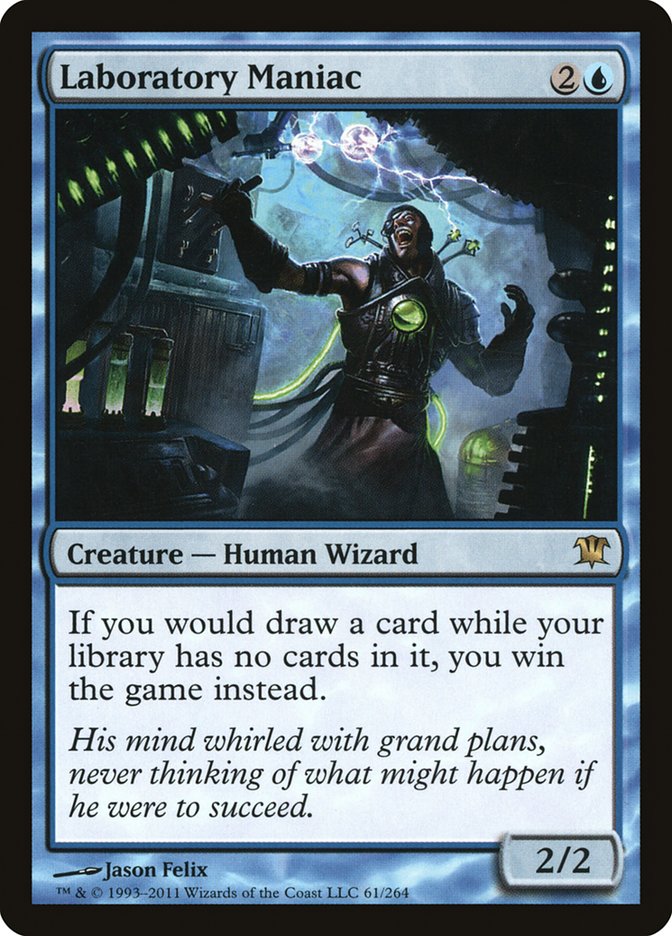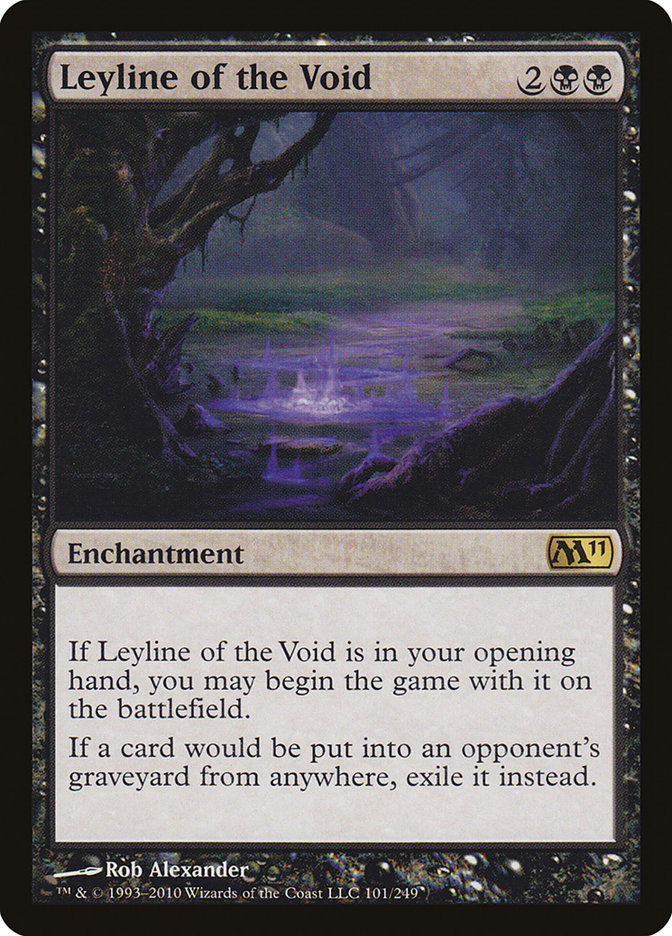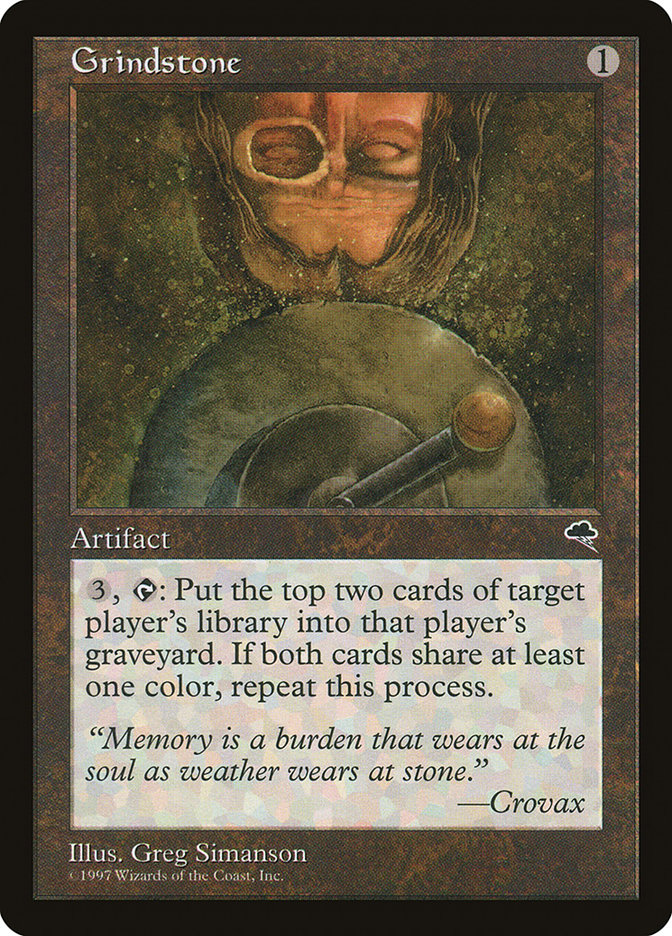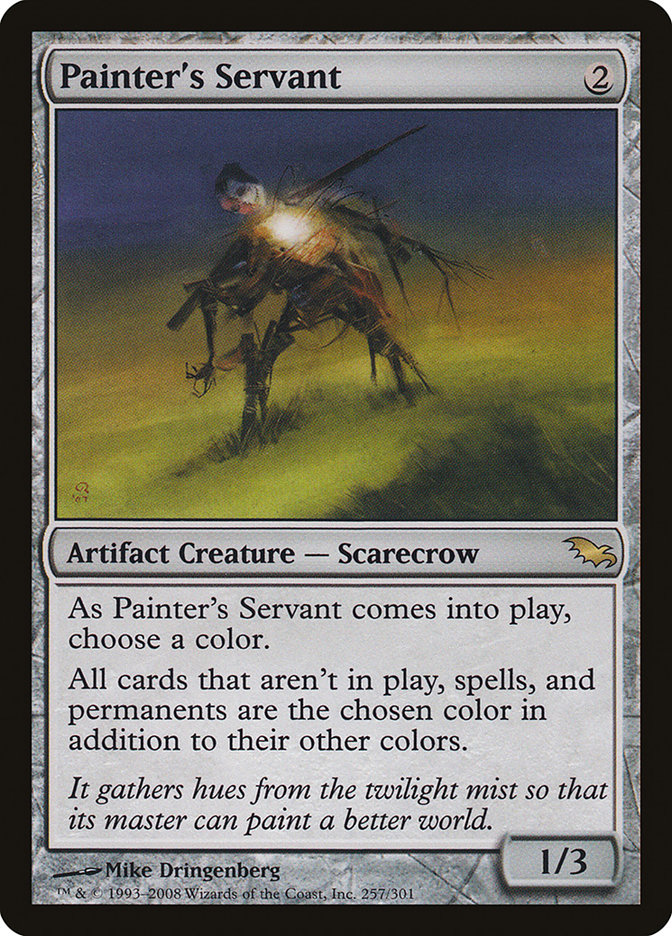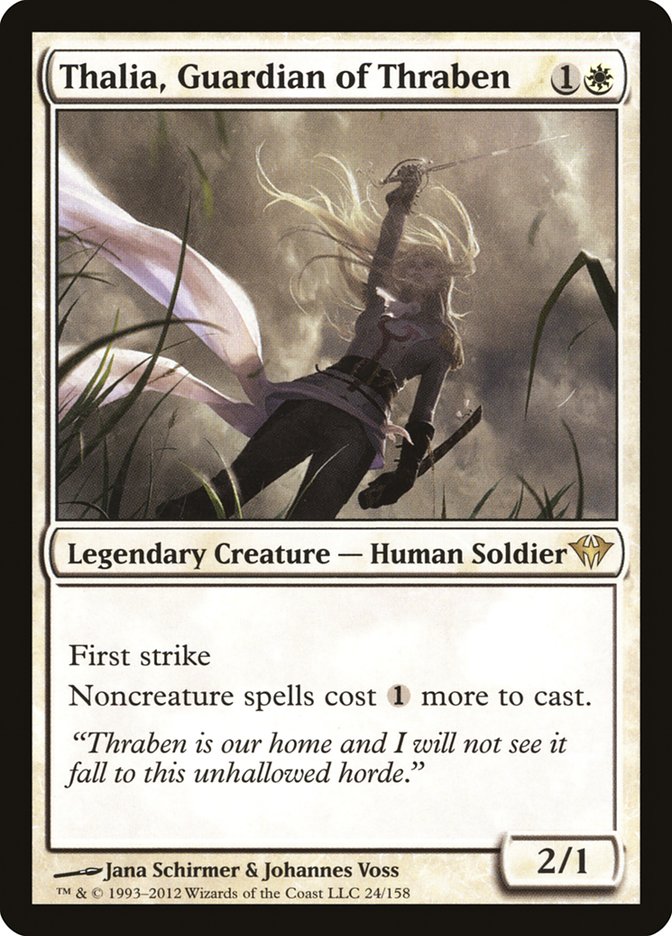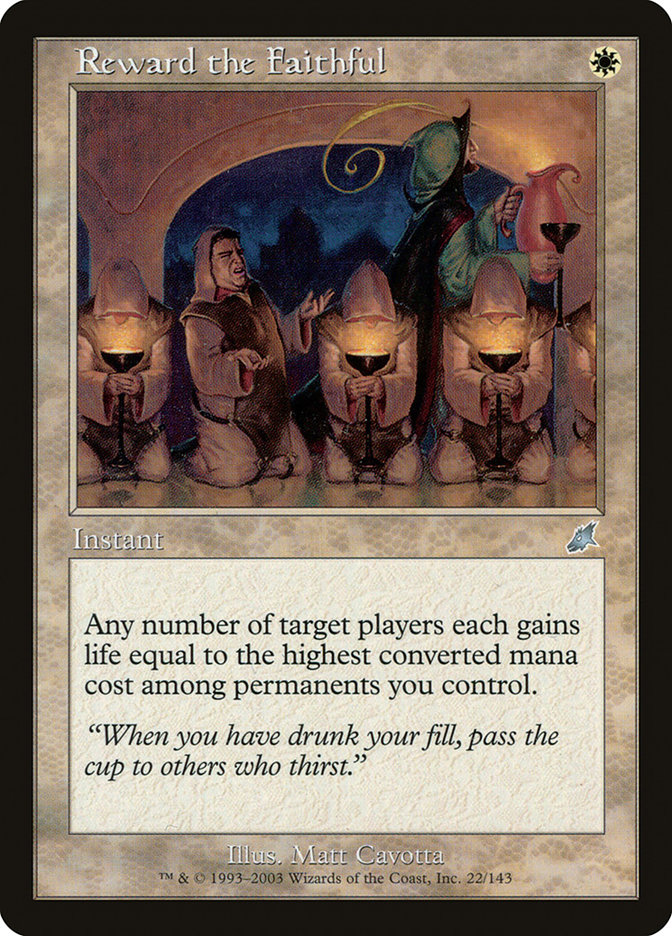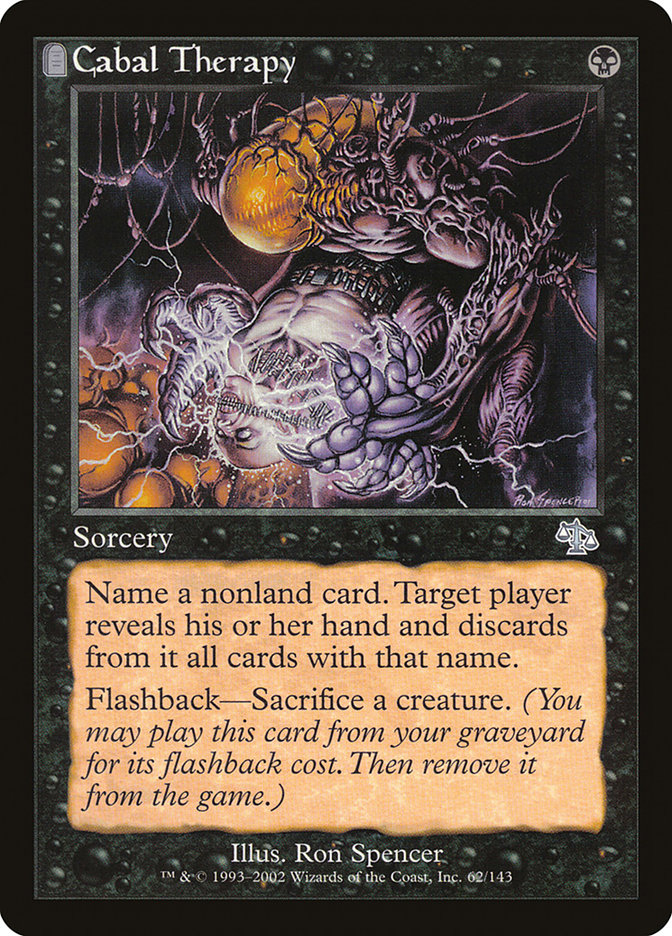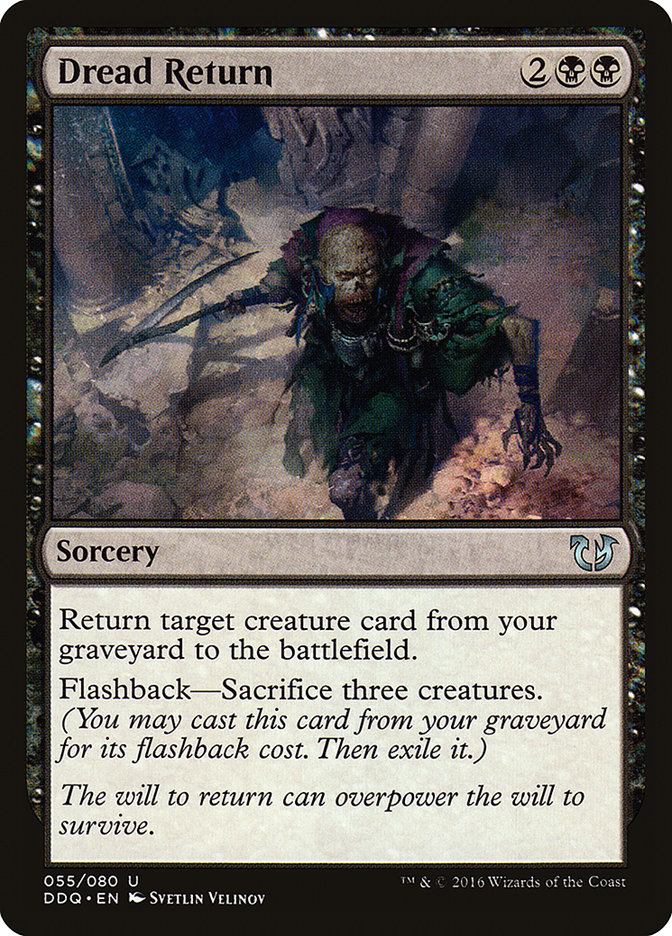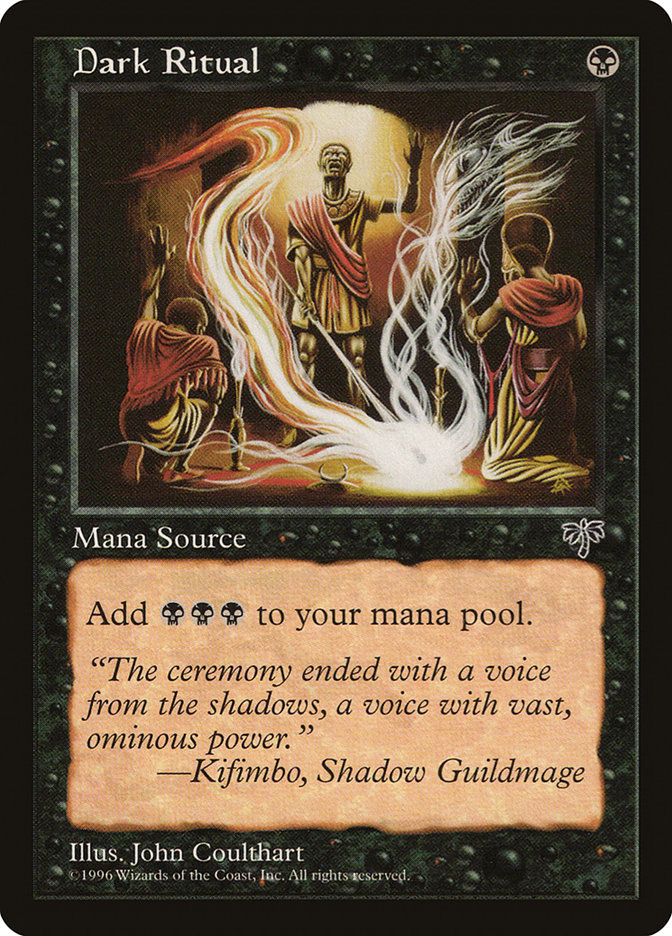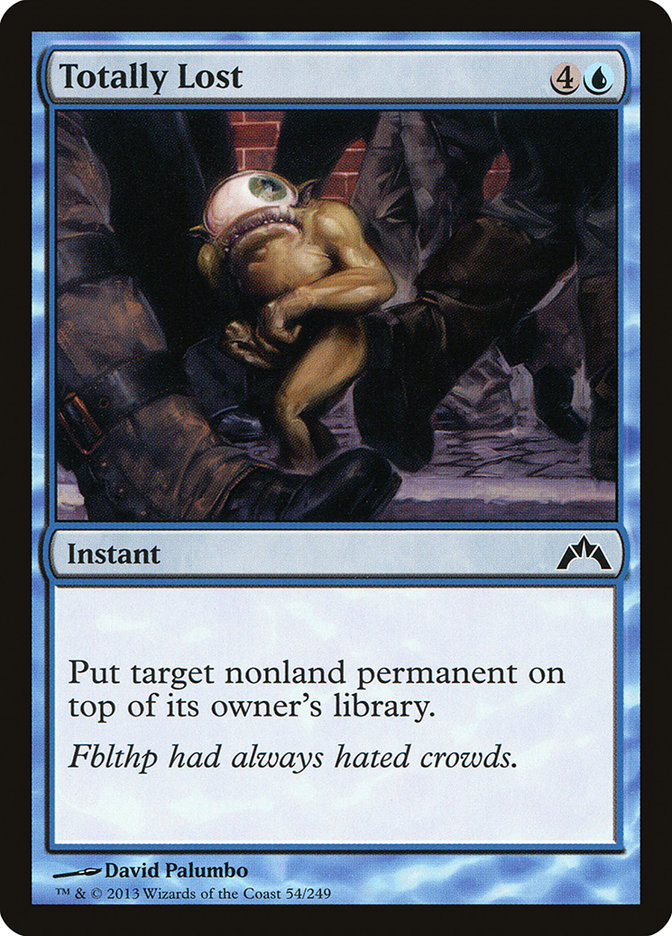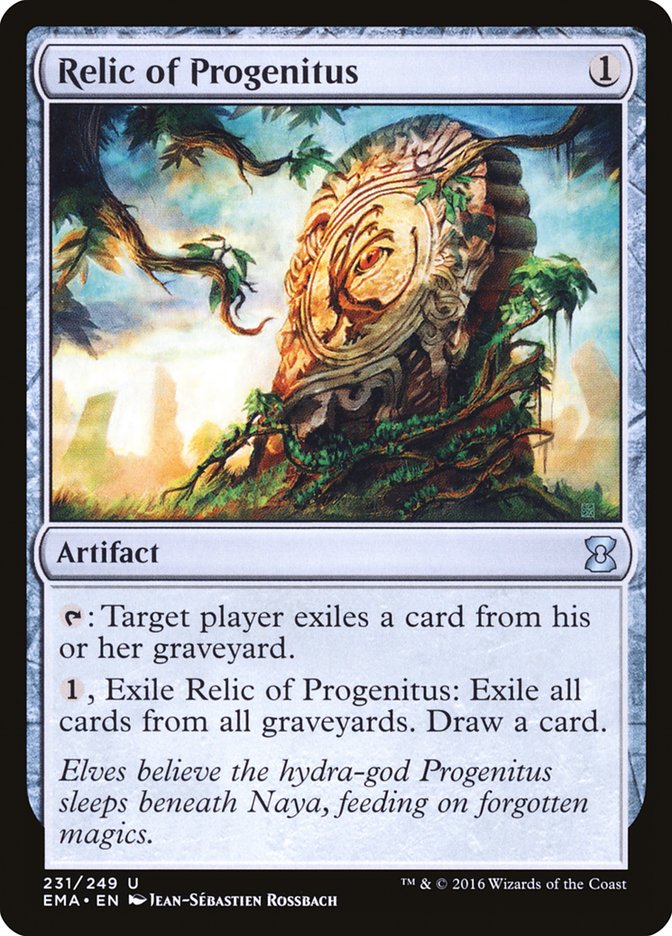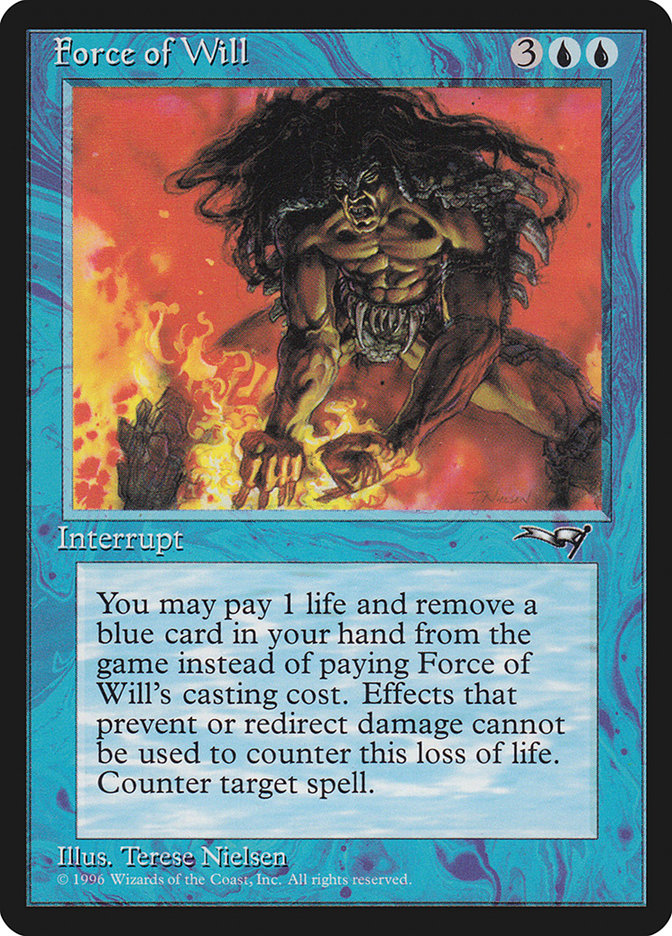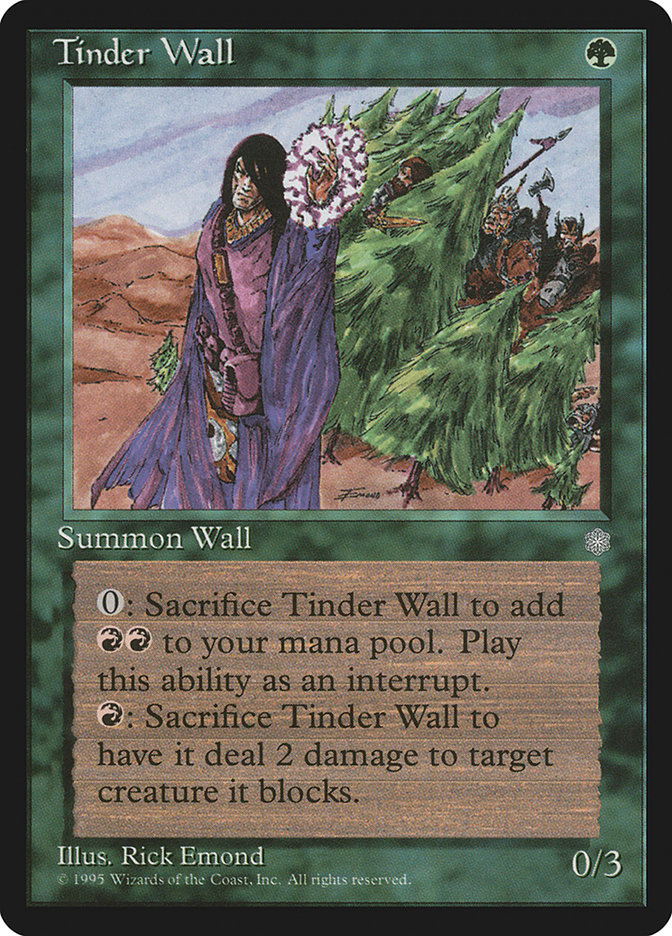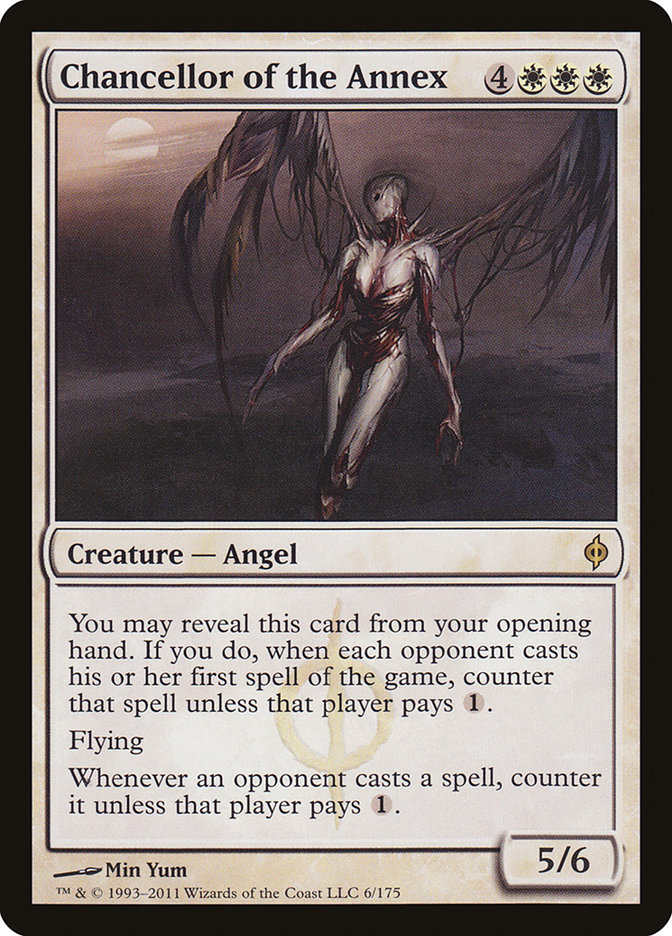Back in July, I wrote about my experience playing the infamous “All Spells” all-in combo deck in a Legacy IQ at the Star City Game Center. Just missing the Top 8 in a 30-player IQ, having not played at Competitive REL in nearly a year and with little prior experience in the Legacy format, got me in a mood to play more, and when the next Legacy IQ rolled around, I rolled up with mostly the same deck in tow (this time without Pact of Negation, which I’d disliked after my July experience).
I looked around the field then. Death and Taxes. Colorless Eldrazi. Aww yeah.
Then I promptly faced what felt like the only two Force of Will decks in the room Rounds 1 and 2 before getting my proverbial teeth kicked in by a prototype version of the B/R Reanimator deck that’s been floating around.
What can I say? You take an all-in combo deck with minimal protection to a competitive event, you run that risk.
But here’s the thing about the Roanoke-area Legacy metagame: it doesn’t move too quickly. Folks don’t switch it up much. They have their decks. They play those decks. And a lot of those decks lack Force of Will because the local metagame’s infested with Force of Will’s predators.
When a metagame is like that, so inbred that it resembles Charles II of Spain, it needs a wake-up call. And at my latest Legacy IQ, I gave it one.
The List
Here’s what I played.
Creatures (30)
Spells (30)
- 1 Cabal Ritual
- 4 Dark Ritual
- 2 Cabal Therapy
- 4 Lotus Petal
- 4 Chrome Mox
- 4 Rite of Flame
- 1 Dread Return
- 4 Summoner's Pact
- 4 Manamorphose
- 2 Gitaxian Probe
Sideboard

I gave a pretty thorough breakdown of how the deck works the last time I wrote about it, but here’s the quick-and-dirty version. I use one-time mana accelerants to get to one black mana and three of any type. Then I use Balustrade Spy or Undercity Informer to mill my whole library (with no lands in my deck, the Spy or Informer never finds one, so everything goes into the graveyard). Then I work some graveyard magic with Narcomoeba, Dread Return, Underworld Cerberus, and Cabal Therapy. Finally I win by casting Laboratory Maniac from my Cerberus-stuffed hand and cycling Street Wraith.
This deck has a lot more in common with Belcher (in fact, it has a transformational sideboard that turns it into a “No-Land Belcher” deck) than it does Storm. Storm can protect its combo by preempting counterspells with discard such as Duress and Cabal Therapy. My build of All Spells has two copies of Cabal Therapy, but they’re mostly for comboing off and getting to use them as protection is gravy.
I did introduce a new wrinkle this time around. In addition to taking out Pact of Negation from my previous build (a card that only works to counteract Force of Will, when All Spells is best off sacrificing any Force of Will matchups), I added two copies of a card that’s shown up in the new B/R Reanimator decks: Chancellor of the Annex.
Creatures (17)
- 1 Tidespout Tyrant
- 4 Simian Spirit Guide
- 4 Chancellor of the Annex
- 4 Griselbrand
- 2 Sire of Insanity
- 2 Insolent Neonate
Lands (13)
Spells (30)

Two weeks before Michel Chevallier took down the European Legacy Champs, Francisco Rodriguez won a StarCityGames.com Invitational Qualifier in Phoenix with a similar build of Reanimator. I remember looking at the decklist, puzzling over the lack of Force of Will, and then appreciating the cleverness of its various interlocking parts. Chancellor of the Annex “tied the room together,” so to speak, by providing disruption on that crucial first turn (among other things, if the Reanimator player is on the play, a Chancellor shuts down the first Force of Will if revealed from the opening hand) as well as when it’s reanimated.
The emergence of the new B/R breed of Reanimator poses multiple challenges to All Spells, at least in theory. B/R Reanimator has disruption with discard spells and Chancellor of the Annex. It can discard and reanimate a first-turn Sire of Insanity, icing me out if I’m on the draw, though a first-turn effective win is less likely than my first-turn actual win. Further, the rise of a strong graveyard-based deck should lead to a rise in graveyard hate, and while I can sideboard into the “No-Land Belcher” plan, I often switch back to the All Spells plan for the third game when I’m on the play, and Ravenous Trap and Faerie Macabre are hard problems to solve, much less Leyline of the Void.
As I mentioned, though, the local Legacy metagame is slow to change. And if the players around me wanted to make my life easier, who was I to argue?
After a great deal of goldfishing, the night before the event I replaced two Gitaxian Probes with Chancellor of the Annex. While I often didn’t like Gitaxian Probe (usually I felt like I was simply seeing what I already knew, that the opponent had Force of Will and I was a long-shot to get out of the jam), I do need at least one and preferably two as backup for my sideboard plan, which needs multiple zero-cost draws to go off with Recross the Paths.
The Tournament
A reasonably robust 21 players showed up at the Star City Game Center on the Sunday after Veterans Day, all looking for their share of sweet prizes and that Invitational qualification. As I looked around the room, I liked what I saw: Death and Taxes, Colorless Eldrazi, B/G Depths (the other surprise deck to emerge from Legacy Champs), and only a few decks that could reasonably pack Force of Will.
Of course, I could always hit double Force of Will matchups and crash out, but I paid my money and took my chances.
Round 1: Jonathan Suarez (Imperial Painter)
When I saw my first-round pairing, I mentally pumped the fist. Mr. Suarez is notable for playing Imperial Painter, and a slower combo deck than mine without Force of Will was exactly what I wanted to face.
In Game 1, I was on the draw. I kept a seven-card hand with a Balustrade Spy and black mana access, even though it was one mana short of going off; being on the draw, I would have multiple looks at additional cards before Mr. Suarez could go off, and I liked my odds better than those in the mulligan pipeline.
After Mr. Suarez led off with a Sensei’s Divining Top, I drew a Narcomoeba, which was not what the doctor ordered. But after Mr. Suarez had only a Grindstone on his second turn (and not a Painter’s Servant, which could’ve gotten awkward with Simian Spirit Guides and Red Elemental Blast), I drew a mana source and gave him the Turn 2 Fun.
In Game 2, I went through the usual fifteen-card sideboarding routine, but I actually put my original sideboard back. Mr. Suarez is a pretty experienced Legacy player, so I figured he knew the “correct” play on my end was to sideboard into No-Land Belcher to dodge his graveyard hate. I went one level beyond that, hoping I hadn’t outguessed myself.
He led on Sensei’s Divining Top. I had the Turn 1 Fun.
1-0 matches, 2-0 games.
Round 2: Sebastian Torres (Death and Taxes)
Another great matchup. In Game 1, I was on the draw. He started with Mother of Runes. I started with “win the game.”
For Game 2, I sideboarded into the No-Land Belcher configuration. I didn’t have any particular data on Mr. Torres, so I went with the obvious plan. If I guessed wrongly, I’d have a Game 3 where I could simply goldfish and win. After my opponent led with an Aether Vial, I set my deck spinning into motion, generating three red mana, one green, and one black. I had both Recross the Paths and Cabal Therapy in my hand, so I chose to cast Cabal Therapy first, naming…oh, what’s the original Thalia called again?
Fortunately, the “sufficiently describe the card to the judge” tournament mechanic worked as expected, and I Cabal Therapied my opponent for the card I feared most. I didn’t see Thalia, Guardian of Thraben. Instead I saw a bunch of graveyard hate (including Rest in Peace) but also Phyrexian Revoker, my least favorite Construct. Sure enough, the next turn it came down, naming Goblin Charbelcher.
I’d foreseen that possibility beforehand, though, and altered my usual Recross the Paths stack to put a Simian Spirit Guide (to produce red mana) and my singleton Ingot Chewer (to evoke — thanks to John Torrez for that piece of tech!) ahead of my usual kill. Then I had to hope my opponent didn’t draw into the goods before I drew into my kill. Fortunately, he only got in a single Flickerwisp attack before Goblin Charbelcher hit him for more than double his life total.
2-0 matches, 4-0 games.
Round 3: Kyle Fitzsimmons (Storm)
I knew roughly what Mr. Fitzsimmons was on, having caught a glimpse of an earlier match. Storm is slower than I am in general, but it does have disruption, so if it’s on the play, it has a chance to steal Game 1 and then be on the play for the deciding Game 3.
Mr. Fitzsimmons was indeed on the play, but after mulliganing to six, I found this hand:
That’s a snap-keep, especially with the scry, as it gives me two looks at another source of mana for the guaranteed kill (as opposed to the “Manamorphose and hope” route). When I saw a Dark Ritual on top of my library, I kept it happily. I really only feared one of two outcomes:
1) Mr. Fitzsimmons just goes off with a Tendrils of Agony for twenty and I never get a turn.
2) Mr. Fitzsimmons casts Cabal Therapy on me and names Balustrade Spy.
He played an Underground Sea. What was next? Gitaxian Probe?
“Duress.”
I laid down my hand, waited for him to make a meaningless choice, and then had my Turn 1 Fun.
Game 2 was raucous, for lack of a better term. I kept this seven-card hand:
This hand can actually kill on turn 1 by stacking the deck with Recross the Paths, drawing a Lion’s Eye Diamond with one of my zero-mana cantrips, casting the LED, holding priority after using the other cantrip, and sacrificing the LED for three blue mana. This draws me into Meditate, which I cast to bring up three more Lion’s Eye Diamonds and a Street Wraith. Cast the three LEDs, hold priority after cantripping and sacrifice the LEDs for nine mana, draw into a Goblin Charbelcher, cast and point, and that’s game!
…except Mr. Fitzsimmons Gitaxian Probed me and promptly named Rite of Flame with Cabal Therapy.
On my turn I drew three relatively junk cards, nothing that would get me closer to Recrossing those Paths. Mr. Fitzsimmons followed up with a discard spell on my Manamorphose, putting me further away. Eventually he went for the Ad Nauseam, going down to five life before finding enough spells to Tendrils of Agony me out.
So it was on to Game 3, and this one was tense. My seven- and six-card hands were junk. I found this on five, on the play:
I kept. Were I to mulligan, I’d basically be banking on drawing the perfect four-card hand. With my five-card hand, I had two looks at the top card, searching for one of the eight Balustrade Spies and Undercity Informers lurking in my 55-card deck. The odds are slightly worse than getting dealt at least one ace or king in a starting hand of Texas Hold ‘Em — I’m only about 27.2% to find one of my key cards, nearly 72.8% to whiff — but that’s still way better than the odds of getting a perfect four.
I did my post-mulligan scry. Chancellor of the Annex. To the bottom it went. I cycled Street Wraith.
I laid my hand down like Stu Ungar announcing gin. Mr. Fitzsimmons didn’t make me go through the motions.
3-0 matches, 6-1 games.
With only 21 players in the field, I was locked for the Top 8; even if I were to somehow play and lose my last two rounds, my tiebreakers would put me at the top of the 3-2 players. The Game 3 will-I-draw-it sweat with the Balustrade Spy had sent me on an adrenaline surge, which wore off just in time for Round 4 to start. Great timing, adrenaline…
Round 4: Alex Morris, B/G Depths
A winnable matchup, but the combination of discard-based disruption and a quick clock could leave me in awkward spots; further, I had graveyard hate to worry about between Crop Rotation and Bojuka Bog.
In Game 1, I flashed a Chancellor of the Annex, and Mr. Morris, slightly flustered, cast a Thoughtseize into it, hoping for a more effective second turn. This is what Chancellor of the Annex is supposed to do: disrupt an opponent just enough to get my own spells through.
I did not have the Turn 1 Fun, unfortunately, as I’d kept a seven-carder with a Balustrade Spy but one mana short. (I’m not sure whether or not that’s a mulligan; the Chancellor swayed me into keeping, as I didn’t know what deck Mr. Morris was on.) I drew an Underworld Cerberus instead and discarded it to hand size.
Cue Mr. Morris playing a Bojuka Bog as his land for the turn and me scooping things up.
In Game 2, I sideboarded into the Goblin Charbelcher package, which was probably a mistake; since I was on the play, my best route likely was to stick to the graveyard plan and hope he didn’t have Surgical Extraction at the ready. In the end I mulliganed down to a mediocre hand, he ripped it apart with discard, and a Marit Lage token sealed the deal.
3-1 matches, 6-3 games.
Round 5: Charlie Holland, Four-Color DeathBlade
Had I been playing things out, 2015 Legacy Champs Top 8 finisher Charlie Holland wielding a deck with four copies each of Force of Will and Deathrite Shaman would not have been my idea of a good time. He was happy to draw into the Top 8, though, and so was I.
3-1-1 matches, 6-3 games.
One round-trip to Subway later, and it was single-elimination time.
The Top 8
The Top 8 went as follows:
Miracles (It’d take one for me to win.)
B/G Depths (My Round 4 opponent, dangerous.)
Colorless Eldrazi (Yes, please!)
All Spells (Gee, wonder who that could be…)
Four-Color DeathBlade (No thanks.)
Storm (My Round 3 opponent, clearly winnable but potentially perilous.)
Death and Taxes (Come to papa!)
Shardless Sultai (A real kick in the pants.)
I ended up in the fourth seed, and when I checked who the fifth seed was, it was none other than my Round 3 opponent, Storm player Kyle Fitzsimmons. Facing Storm on the play? I’ll take that.
Quarterfinals: Kyle Fitzsimmons, Storm
Game 1, I had the play due to being the higher seed. I also had the Turn 1 Fun.
For Game 2, I went through the sideboarding routine but kept the graveyard package in. He seemed not to have much graveyard hate and speed was essential.
I kept a beautiful seven-card hand whose only flaw was that it had just one Balustrade Spy. My opponent grudgingly kept a hand. He fetched an Underground Sea and cast Cabal Therapy without knowing my hand or plan.
With four potential killer cards to choose from (Balustrade Spy, Undercity Informer, Goblin Charbelcher, and Recross the Paths), he weighed which card to name for a while.
Finally he sighed and said, “Balustrade Spy.”
I couldn’t resist a little showman’s flair. I laid the cards out one at a time, leaving the Balustrade Spy for last. We shared a bit of a laugh; it was lucky, to be sure, but I’d been lucky in Round 3, so I had nothing to complain about.
On my turn, I drew Dread Return. Great, I thought. Another card I’ll have to discard eventually. I passed.
Mr. Fitzsimmons continued to attack my hand. Eventually he cast Empty the Warrens for twelve Goblin tokens, sacrificing one to Flashback Cabal Therapy. He took a Manamorphose he knew was in my hand, and it was in that moment that I saw how I’d given up my best chance to win the game:
Dread Return has a mana cost.
Of course I have a mana cost! I’m not Ancestral Vision!
With the mana sources I’d had in-hand at the time, it would’ve been a coin-flip whether I would’ve been able to go off, as I needed to draw a mana source with the Manamorphose, but I was down to a Dread Return, a Lotus Petal, a Simian Spirit Guide, and unusable junk. Part of me wanted to call the game a loss, but the part of me that controlled scooping rejected that. So you made a suboptimal decision because you hadn’t seen the scenario before. This isn’t over. You have a draw step, maybe two, to get out of it. See what happens.
My turn. Untap. Upkeep. Draw.
Well, then.
“Lotus Petal. Dark Ritual, sacrificing Lotus Petal, three black mana floating. Simian Spirit Guide, add a red.” I took a breath. “Hardcast Dread Return, targeting Balustrade Spy.”
After a bit of confusion, complicated by another adrenaline spike that left my hands shaky and my play messy, I got my library in my graveyard, my Laboratory Maniac cast, and my Street Wraith cycled.
4-1-1 matches, 8-3 games.
Not surprisingly, my match was the first to finish and I had time to look in on the other results. Four-Color DeathBlade and Shardless Sultai fell in the quarterfinals, leaving one match to go: Miracles versus Death and Taxes. It was also the match to determine my semifinals opponent, so naturally I had a rooting interest in Jeremy Meikle, the Death and Taxes player, defeating Tyler Gardner, the Miracles player who’d crushed the Swiss portion of the event 5-0.
Miracles won in two games. Well, Fblthp.
The name says it all.
When the last four players gathered, we were offered the option to split all prizes but the invitation. Knowing what I was up against, I cheerfully said yes, and fortunately everyone else agreed. It was a load off my mind as I sat down to face my Magical fate against Miracles.
Semifinals: Tyler Gardner (Miracles)
During the pregame, I looked longingly at the other match, Colorless Eldrazi versus B/G Depths. Of course I’d rather be facing either of those decks, but I’d been lucky this tournament before facing Miracles. Maybe I’d get lucky against it.
In Game 1, I mulliganed to near-oblivion (the first time all tournament), keeping mana with no Balustrade Spy or Undercity Informer. My scry look got sent to the bottom. I had a plan, such as it was: draw one of my key cards and let it rip. Maybe my foe hadn’t kept a hand with Force of Will. It wasn’t much of a hope, but it was my best chance to win.
Mr. Gardner led off with his singleton maindeck Relic of Progenitus. I burst out laughing.
“You can have me deck-checked if you like,” offered Mr. Gardner. No, no, I told him, it wasn’t that. It was just funny. (I looked at his list later, and indeed he had a singleton Relic of Progenitus maindeck.)
Mr. Gardner’s first-turn Relic left me just one turn to find my Balustrade Spy or Undercity Informer before the Relic of Progenitus became truly “live” and I had to find my singleton Ingot Chewer as well to deal with it. I didn’t find a creature with my draw, and so the wait started. As he fortified his battlefield position and cards in hand, my wishlist grew: Ingot Chewer, Cabal Therapy, that Spy or Informer I still hadn’t found…
Eventually he ultimated Nahiri, the Harbinger and smacked me with Emrakul, the Promised End. Seven life. I could still win at seven. But then he cast Entreat the Angels off a miracle trigger, and that slammed the door.
In Game 2, I kept to the graveyard plan, prioritizing speed. I mulliganed to a hand that had an Undercity Informer but was short on mana. I did have a Gitaxian Probe for an additional look at the top. The scry card was junk, and sent to the bottom. Time to Gitaxian Probe. My opponent seemed almost cheerful about letting me have a look. I soon learned why.
Gin.
Hang on, I told him, standing up. I gotta tell you something. I went around the side of the table and whispered in his ear.
“I can’t beat Surgical. Good game.”
4-2-1 matches, 8-5 games.
Mr. Gardner eventually won the tournament, not losing a single match on his way to the title. I wish him the best of luck in Atlanta!
The Takeaways
1. The plan worked.
Leaving aside the just-world ideas of whether or not my approach “should’ve” worked, it did. I hit the matchups I was counting on and my deck delivered in-match. Did I get lucky? Of course. But the plan set up a lot of that luck.
2. Ingot Chewer pulled its weight.
While it only directly won me one game (Round 2, Game 2), it gave me chances I wouldn’t have in several other games and in several matchups I didn’t face (notably Colorless Eldrazi).
3. The second Tinder Wall did not.
The first Tinder Wall has a purpose, creating two red mana out of one green for use in Goblin Charbelcher situations. The second just clutters things, especially when the two are drawn together.
4. Chancellor of the Annex needs to be a full playset or cut to zero.
Two Chancellor of the Annex proved to be wishy-washy. I only had it in an opening hand I kept once. (I saw it much more often in scrys or natural draws — a statistic that can’t hold.) Without the B/R Reanimator backup plan of making it a reanimation target, Chancellor becomes a more flexible Pact of Negation — but still a card that has limited utility except as a Chrome Mox imprint. Either I commit to it or I cut it.
5. I’m not playing All Spells in my next Legacy IQ.
The local Legacy metagame may move slowly, but it will move eventually. As more players shift to decks like B/G Depths and B/R Reanimator (the latter in particular, as it’s notably inexpensive by Legacy standards) that are fast and disruptive, All Spells loses ground relative to a metagame stuffed with Death and Taxes, Colorless Eldrazi, and the like. A single shown Chancellor of the Annex can wreck a perfectly calibrated Turn 1 Fun hand from All Spells.
More worrisome to me, however, is a potential uptick in graveyard hate. Between a possible rise in B/R Reanimator and some weirdo running around with All Spells, Surgical Extraction seems like a good choice for the sideboard that’s available to any deck. It’s a lot easier to switch sideboard cards than whole archetypes, especially in Legacy, and I’d rather not deal with sideboards tilted against me.
Maybe I’ll play One-Land Belcher. Maybe I’ll buy the cards for B/R Reanimator that I don’t already have. But there’s just too much heat on All Spells now in Roanoke for my taste. I’ve had a good run with it, but it’s time to put it aside for a while.
My December
Back in August, Mark Nestico wrote a piece of fiction set in the world of Innistrad, “Grappling With The Past.” It got me thinking about a story I’d written early on in my time as an SCG columnist, “The Tavern Swindle,” and how it’d been a long time since I’d written a tale like it.
For my columns in December I’ll be writing two stories, each set on Kaladesh! I’m excited to explore the world and set my imagination to work on some of its intriguing details. Watch for the first one in two weeks!


